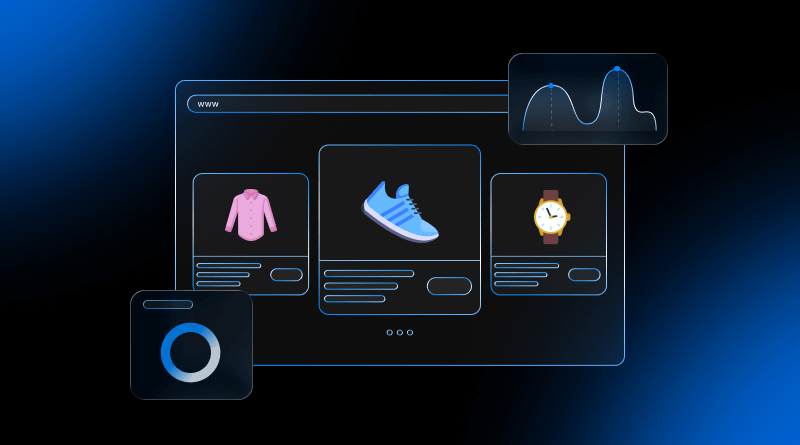Digital marketing is a new-age marketing method, like affiliate marketing, that many companies leverage. It generates sales and revenue through online leads. But a new term related to this domain has become the talk of the town. It is performance marketing, which is the next-gen digital marketing. Now, as the term implies, marketers are only responsible for paying for a successful campaign completion. For instance, when a viewer clicks through to their page or makes a purchase.
This data-driven marketing strategy is highly effective in Western nations. Now, in the Asia-Pacific region, this is also trending. Emarketer reports that global ad spend has surged to 10.1% YoY in 2025, reaching over $76.5 billion. A comprehensive insight is given below about performance marketing, its functions, its salary, and its future.
Table Of Content
Performance Marketing: Explained in a Nutshell
Simply combine paid marketing and brand marketing, and you can call it performance marketing. It is a win-win marketing opportunity that focuses on measurable results. Merchants receive maximum brand exposure and targeted clicks on the campaign ad. Social media, embedded videos, and search engines are different performance marketing channels. The payment metrics depend on the number of clicks, impressions, views, or shares.
Different Performance Marketing Channels
It is not only search engines that get counted in the performance marketing channels. Others are also included in this list.
1. Banner (Display) Ads
Your computer screen might have been filled with pop-up banner ads. This happens mostly on the news portals, but every website allocates an ad space for brands to advertise. On social media, you also come across such promotional banner ads. Their USP is a highly appealing factor. Video, HTML ads, or static image ads are some examples that captivate human attention with engaging multimedia content.
2. Native Advertising
You might have seen recommended videos/posts on LinkedIn or Facebook. Or else, consider the native advertising example as sponsored search results on Google. Ecommerce websites are flooded with native ads. It is a popular channel because it is also visible beside your organic content. Often, users won’t differentiate between these kinds of content, allowing you to promote your brand in a way that feels natural.
3. Content Marketing
Content marketing means educating the audience about your brand. OmniVirt reports that it costs 62% less than outbound marketing and generates 3x leads. With content marketing in focus, it provides users with useful information, putting the brand into context. For example, a vitamin company might write a series of informative blog posts about the benefits of probiotics, with a link back to the probiotics they sell. In this, you can market your product with the help of eBooks, videos, blogs, and more.
4. Search Engine Marketing (SEM)
Most people conduct online research using a search engine, so having a site optimized for search engine marketing (SEM) is imperative. When it comes to performance marketing, it largely focuses on cost-per-click (CPC), which pertains mostly to paid advertising. In regard to organic SEM, a lot of performance marketers use content marketing in conjunction with SEO-optimized landing pages.
How Performance Marketing Works?
1. Goals and Actions
The process begins with a clear definition of the intended outcome or conversion objective, encompassing site visits, form completion, or purchases.
These are quantifiable and traceable, which becomes grounds for performance assessment.
2. Choosing Correct Channels
Performance marketing makes use of a variety of channels in the digital field, such as affiliate marketing, pay-per-click (PPC) advertising, social media advertising, and search engine marketing (SEM).
The selection of channels is based on the target audience and on the specific goals.
3. Establishing UTMs
One way to do this is to implement robust tracking mechanisms (such as customized landing pages, campaign codes, and UTM parameters) to allow proper attribution of the marketing results to the specific marketing program.
Powerful real-time analytics tools are at hand to track performance, detect trends, and make the necessary adjustments.
4. Optimizing Campaigns
Campaigns are optimized on the basis of the collected data to achieve better performance and maximize ROI.
These can be achieved by adapting targeting options, ad designs, or bidding.
Performance Marketing Salary
Performance marketing salary can also vary significantly by position type and the level of experience, with examples ranging between ₹3 LPA and ₹15 LPA ($3,421.32-17,106.60/yr) or more, with high-level or specialized positions coming in even higher, up to ₹30-55 LPA ($34,000/yr-62,724/yr). The major factors leading to disparities in salary are the level of experience, the location, the size of the company, and the industry.
Role- Specific Salary Ranges
- Entry-Level Performance Marketer
- Salaries are between ₹3.0 Lakhs or $3421.32 in a year and ₹16.2 Lakhs or $18475.13 annually.
- Performance Marketing Manager
- Averages can fall between ₹5.0 Lakhs ($5,702.20) and ₹27.0 Lakhs ($30,791.88) per year, depending on experience and company.
- Performance Marketing Lead
- Compensation is higher, with potential salaries ranging from ₹8.0 Lakhs ($9,123.52) to ₹45.0 Lakhs ($51,319.80) per year, especially in industries like software products.
- Head Performance Marketing
- Senior leadership roles can command significantly higher salaries, with figures around ₹25.0 Lakhs ($28,511) to ₹55.0 Lakhs ($62,724.20) per year in some sectors.
Is Performance Marketing and Affiliate Marketing the Same?
Affiliate marketing and performance marketing are different methods. Affiliate marketing allows marketers to earn a commission on every order. In performance marketing, marketers use different channels like paid advertising, influencers, and affiliates, where payment is made after measurable results. Affiliate marketing relies explicitly on third-party “affiliates” who promote products or services and get paid for actions like sales generated through their efforts. Even MilesWeb runs its affiliate program, where you can promote our web hosting services and earn lucrative commissions.
With the advent of AI and next-gen technologies, performance marketing is here to stay. You can fast-track your digital marketing career with some of the popular online courses. Performance redefines the business approach that digital marketers use. It makes the campaign more measurable, result-driven, and cost-effective. With this, marketers ensure higher ROI.
The digitally focused evolution will continue to lead the way in modern advertising, and performance marketing is a crucial part of that. Companies that embrace this idea of performance marketing as a data-driven business model move not only with the competition, but also build a better connection with customers along the way through personalized, targeted campaigns.
FAQs
Does performance marketing focus on short-term or long-term goals?
Performance marketing primarily focuses on short-term, measurable goals like clicks, leads, and sales.
What are the main channels used in performance marketing?
The main channels include search engine marketing (SEM), social media advertising, affiliate marketing, and native advertising.
How can a business benefit from a performance marketing strategy?
Businesses benefit from a performance marketing strategy through cost-effectiveness, a measurable ROI, and the ability to quickly optimize campaigns based on performance data.
Is performance marketing more suitable for small businesses or large corporations?
Performance marketing is highly suitable for both small businesses due to its low-risk and budget-friendly nature, and for large corporations for its scalability and efficiency.















